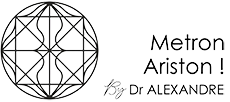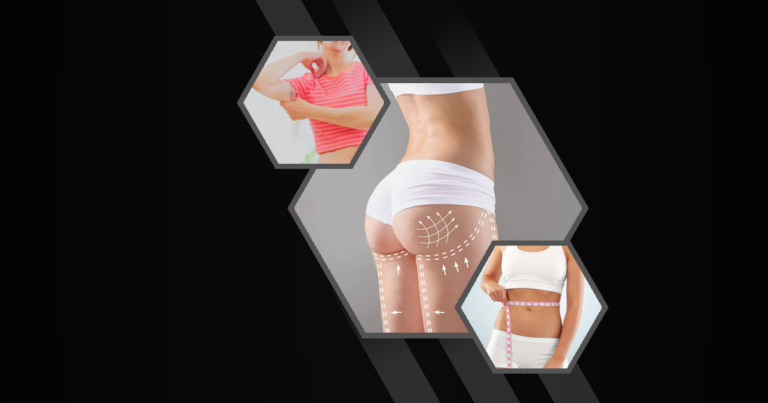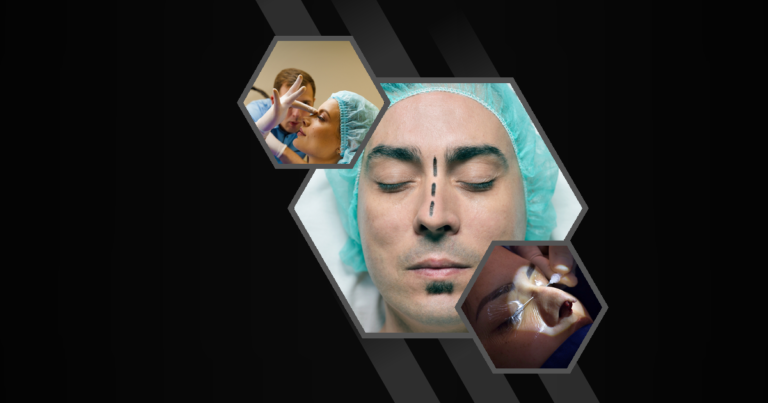What is Functional Rhinoplasty? Understanding the Procedure and Benefits
Functional rhinoplasty is a surgical procedure aimed at improving the function of the nose. Unlike cosmetic rhinoplasty, which focuses on appearance, functional rhinoplasty addresses issues that affect breathing and overall nasal function.
This procedure can significantly enhance the quality of life for individuals experiencing nasal obstructions or breathing difficulties.
What is Functional Rhinoplasty?
Definition and Purpose
Functional rhinoplasty is a specialized surgery designed to correct structural problems in the nose that impede normal breathing. The primary goal is to restore proper airflow through the nasal passages, which can be compromised due to various anatomical issues.
Nose Reshaping Procedure
Nose Reshaping Procedure changes the shape and size of your nose to make it look different doctors use special tools and techniques to make your nose match your face better
This procedure is often recommended for individuals who have difficulty breathing through their nose, experience chronic nasal congestion, or suffer from sleep disturbances due to nasal blockages.
- Restores nasal function : Focuses on improving airflow.
- Addresses structural issues : Corrects anatomical problems.
- Enhances quality of life : Reduces breathing difficulties.
Difference Between Functional and Cosmetic Rhinoplasty
While both functional and cosmetic rhinoplasty involve surgical alterations to the nose, their objectives differ. Cosmetic rhinoplasty is primarily concerned with the aesthetic appearance of the nose, aiming to enhance facial harmony.
In contrast, functional rhinoplasty is focused on resolving medical issues that affect nasal function. It’s not uncommon for patients to combine both procedures to achieve both functional and aesthetic improvements.
- Functional rhinoplasty : Improves breathing and nasal function.
- Cosmetic rhinoplasty : Enhances the nose’s appearance.
- Combined approach : Offers both functional and aesthetic benefits.
Common Conditions Addressed by Functional Rhinoplasty
Deviated Septum
A deviated septum occurs when the nasal septum, the cartilage dividing the nostrils, is off-center or crooked. This can lead to breathing difficulties, nasal congestion, and even sinus infections. Functional rhinoplasty can straighten the septum, improving airflow and reducing related symptoms.
- Causes breathing issues : Due to misalignment.
- Leads to congestion : Often results in blocked nasal passages.
- Corrected by surgery : Straightens the septum for better airflow.
Nasal Valve Collapse
Nasal valve collapse is a condition where the nasal valve, the narrowest part of the nasal airway, weakens or collapses, obstructing airflow. This can cause significant breathing problems, especially during physical activities. Functional rhinoplasty can reinforce the nasal valve, ensuring it remains open during inhalation.
- Obstructs airflow : Due to weakened nasal valve.
- Affects breathing : Particularly during exercise.
- Surgical correction : Reinforces the nasal valve structure.
Enlarged Turbinates
Turbinates are structures within the nose that help filter and humidify the air we breathe. When they become enlarged, they can block airflow and cause chronic congestion. Functional rhinoplasty can reduce the size of the turbinates, improving nasal breathing.
- Blocks airflow : Due to enlargement.
- Causes congestion : Leads to chronic nasal blockage.
- Reduced by surgery : Shrinks turbinates for better breathing.
Nasal Polyps
Nasal polyps are soft, painless growths that can form on the lining of the nasal passages or sinuses. They can obstruct airflow and lead to breathing difficulties. Functional rhinoplasty can remove these polyps, restoring normal nasal function.
- Obstructs nasal passages : Due to growths.
- Impairs breathing : Causes significant blockage.
- Removed surgically : Clears nasal passages for improved function.
Benefits of Functional Rhinoplasty
Improved Breathing
One of the primary benefits of functional rhinoplasty is improved breathing. By correcting structural issues within the nose, patients often experience a significant enhancement in their ability to breathe through their nose, leading to a better quality of life.
- Enhances airflow : Corrects obstructions.
- Reduces congestion : Clears nasal passages.
- Improves quality of life : Facilitates easier breathing.
Enhanced Sleep Quality
Functional rhinoplasty can also lead to enhanced sleep quality. By alleviating nasal obstructions, patients often find they can sleep more soundly and wake up feeling more refreshed.
- Reduces sleep disturbances : Clears nasal blockages.
- Promotes restful sleep : Improves breathing during sleep.
- Increases energy levels : Leads to better rest.
Reduced Snoring
Snoring is often caused by nasal obstructions that restrict airflow. By addressing these issues, functional rhinoplasty can significantly reduce or even eliminate snoring, benefiting both the patient and their sleeping partner.
- Decreases snoring : Clears nasal obstructions.
- Improves sleep for partners : Reduces noise during sleep.
- Enhances overall sleep quality : Facilitates quieter nights.
Better Exercise Performance
For individuals who experience breathing difficulties during physical activities, functional rhinoplasty can lead to better exercise performance. By improving nasal airflow, patients often find they can engage in physical activities with greater ease and endurance.
- Increases endurance : Facilitates better breathing.
- Enhances performance : Improves airflow during exercise.
- Supports active lifestyle : Encourages physical activity.
The Functional Rhinoplasty Procedure
Pre-operative Consultation
Before undergoing functional rhinoplasty, patients will have a pre-operative consultation with their surgeon. During this meeting, the surgeon will assess the patient’s nasal structure, discuss their symptoms, and outline the surgical plan. This is also an opportunity for patients to ask questions and express any concerns.
- Assessment of nasal structure : Evaluates issues.
- Discussion of symptoms : Identifies breathing problems.
- Surgical plan outline : Details procedure steps.
Surgical Techniques
Functional rhinoplasty can involve various surgical techniques, depending on the specific issues being addressed. Common techniques include septoplasty, turbinate reduction, and nasal valve repair. The surgeon will choose the most appropriate method based on the patient’s needs.
- Septoplasty : Corrects deviated septum.
- Turbinate reduction : Shrinks enlarged turbinates.
- Nasal valve repair : Reinforces nasal valve structure.
Anesthesia Options
Functional rhinoplasty is typically performed under general anesthesia, ensuring the patient is comfortable and pain-free during the procedure. In some cases, local anesthesia with sedation may be an option, depending on the complexity of the surgery and the patient’s preference.
- General anesthesia : Commonly used for comfort.
- Local anesthesia with sedation : Alternative option.
- Patient preference considered : Discussed during consultation.
Recovery and Post-operative Care
Timeline for Recovery
Recovery from functional rhinoplasty varies from patient to patient, but most individuals can expect to return to normal activities within a few weeks. Initial swelling and bruising typically subside within the first two weeks, with full recovery taking several months.
- Initial recovery : 1-2 weeks for swelling reduction.
- Return to activities : Generally within a few weeks.
- Full recovery : Several months for complete healing.
Pain Management
Pain management is an important aspect of post-operative care. Patients may experience some discomfort and swelling, which can be managed with prescribed pain medications and cold compresses. It’s important to follow the surgeon’s instructions for optimal recovery.
- Prescribed medications : For pain relief.
- Cold compresses : To reduce swelling.
- Follow surgeon’s instructions : Ensures proper healing.
Activity Restrictions
During the recovery period, patients will need to adhere to certain activity restrictions to ensure proper healing. This may include avoiding strenuous activities, refraining from blowing the nose, and keeping the head elevated while sleeping.
- Avoid strenuous activities : Prevents complications.
- Refrain from nose blowing : Protects surgical site.
- Elevate head while sleeping : Reduces swelling.
Risks and Complications of Functional Rhinoplasty
Potential Side Effects
As with any surgical procedure, functional rhinoplasty carries some risks and potential side effects. These may include swelling, bruising, infection, and changes in nasal sensation. It’s important for patients to be aware of these risks and discuss them with their surgeon.
- Swelling and bruising : Common post-surgery effects.
- Infection risk : Managed with proper care.
- Changes in sensation : Temporary or permanent.
Long-term Considerations
While functional rhinoplasty can provide significant benefits, there are long-term considerations to keep in mind. Some patients may require additional procedures in the future, and it’s important to maintain realistic expectations about the outcomes.
- Potential for additional procedures : In some cases.
- Realistic expectations : Important for satisfaction.
- Ongoing care : May be necessary for optimal results.
Choosing a Surgeon for Functional Rhinoplasty
Qualifications to Look For
When choosing a surgeon for functional rhinoplasty, it’s crucial to consider their qualifications and experience. Look for a board-certified surgeon with specialized training in nasal surgery and a proven track record of successful outcomes.
- Board certification : Ensures expertise.
- Specialized training : In nasal surgery.
- Proven track record : Demonstrates success.
Questions to Ask During Consultation
During the consultation, patients should ask questions to ensure they feel comfortable and informed about the procedure. Important questions include the surgeon’s experience, the expected outcomes, and the recovery process.
- Surgeon’s experience : In functional rhinoplasty.
- Expected outcomes : Discuss potential results.
- Recovery process : Understand post-operative care.
Combining Functional and Cosmetic Rhinoplasty
Benefits of a Dual Approach
Combining functional and cosmetic rhinoplasty can offer comprehensive benefits, addressing both functional issues and aesthetic concerns. This dual approach can enhance both nasal function and appearance, providing a more harmonious result.
- Addresses functional and aesthetic concerns : Comprehensive approach.
- Enhances nasal function and appearance : Dual benefits.
- Provides harmonious results : Improved overall outcome.
Considerations for Combined Procedures
When considering a combined procedure, it’s important to discuss the potential benefits and risks with the surgeon. Patients should have realistic expectations and understand the recovery process for both functional and cosmetic aspects.
- Discuss benefits and risks : With the surgeon.
- Realistic expectations : Important for satisfaction.
- Understand recovery process : For both aspects.
Non-surgical Alternatives to Functional Rhinoplasty
Nasal Strips and Dilators
For individuals seeking non-surgical alternatives, nasal strips and dilators can provide temporary relief from nasal obstructions. These devices work by physically opening the nasal passages, improving airflow during sleep or physical activities.
- Temporary relief : From nasal obstructions.
- Improves airflow : During sleep or exercise.
- Non-invasive option : For mild cases.
Medications and Sprays
Medications and nasal sprays can also be used to manage symptoms of nasal obstruction. These treatments may include decongestants, antihistamines, and corticosteroid sprays, which can reduce inflammation and improve breathing.
- Decongestants and antihistamines : Manage symptoms.
- Corticosteroid sprays : Reduce inflammation.
- Improves breathing : With regular use.
Long-term Results and Maintenance
Expected Outcomes
Functional rhinoplasty can provide long-term improvements in nasal function, leading to better breathing and enhanced quality of life. Most patients experience significant relief from their symptoms and are satisfied with the results.
- Long-term improvements : In nasal function.
- Better breathing : Enhanced quality of life.
- High satisfaction rate : Among patients.
Follow-up Care
Follow-up care is essential to ensure the best possible outcomes from functional rhinoplasty. Patients should attend all scheduled appointments with their surgeon and report any concerns or complications promptly. Ultrasonic nose reshaping uses sound waves to change the shape of your nose without surgery It’s a quick way to make small changes to how your nose looks without cutting or stitches Innovative rhinoplasty technique uses new methods to reshape noses Doctors can now change nose size and shape with less pain using
- Scheduled appointments : For monitoring progress.
- Report concerns : To the surgeon.
- Ensures best outcomes : With proper care.
Final Thoughts
Functional rhinoplasty is a valuable procedure for individuals experiencing nasal obstructions and breathing difficulties. By addressing structural issues within the nose, this surgery can significantly enhance quality of life, improve sleep, and boost overall well-being.
It’s important for patients to choose a qualified surgeon and have realistic expectations about the outcomes. Whether considering functional rhinoplasty alone or in combination with cosmetic enhancements, this procedure offers a path to better nasal function and improved quality of life.
FAQs
How long does it take to recover from functional rhinoplasty?
Recovery from functional rhinoplasty typically takes several weeks, with most patients returning to normal activities within two to three weeks. Initial swelling and bruising usually subside within the first two weeks, but full recovery can take several months.
Is functional rhinoplasty covered by insurance?
Functional rhinoplasty is often covered by insurance if it is deemed medically necessary to correct breathing issues. Patients should check with their insurance provider to understand their coverage and any potential out-of-pocket costs.
What is the success rate of functional rhinoplasty?
The success rate of functional rhinoplasty is generally high, with most patients experiencing significant improvements in nasal function and breathing. Success depends on the specific issues being addressed and the skill of the surgeon performing the procedure.








